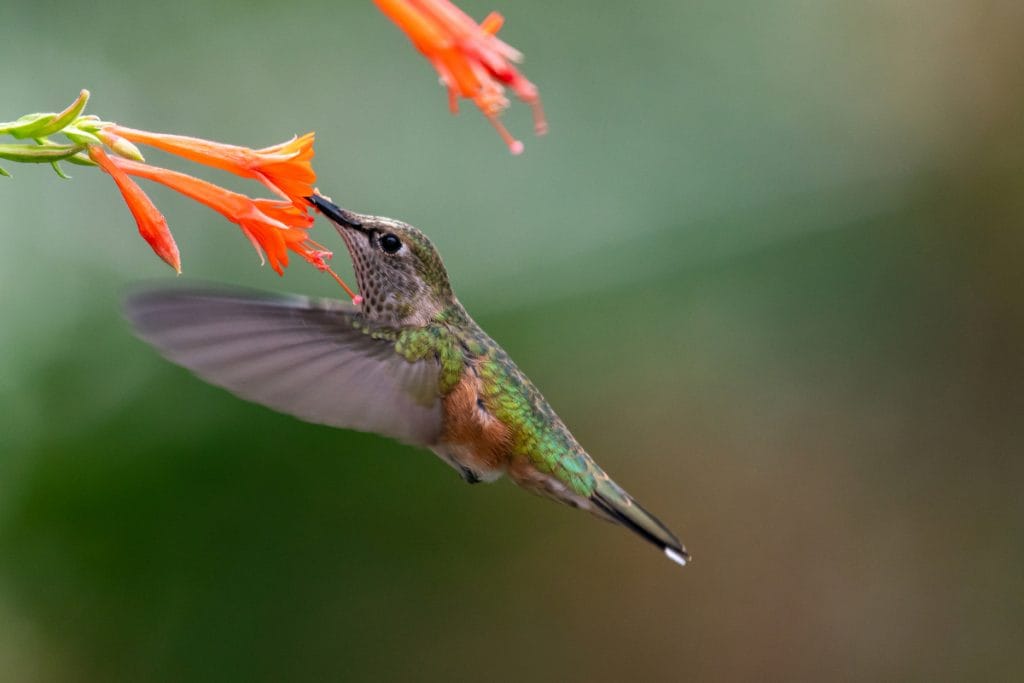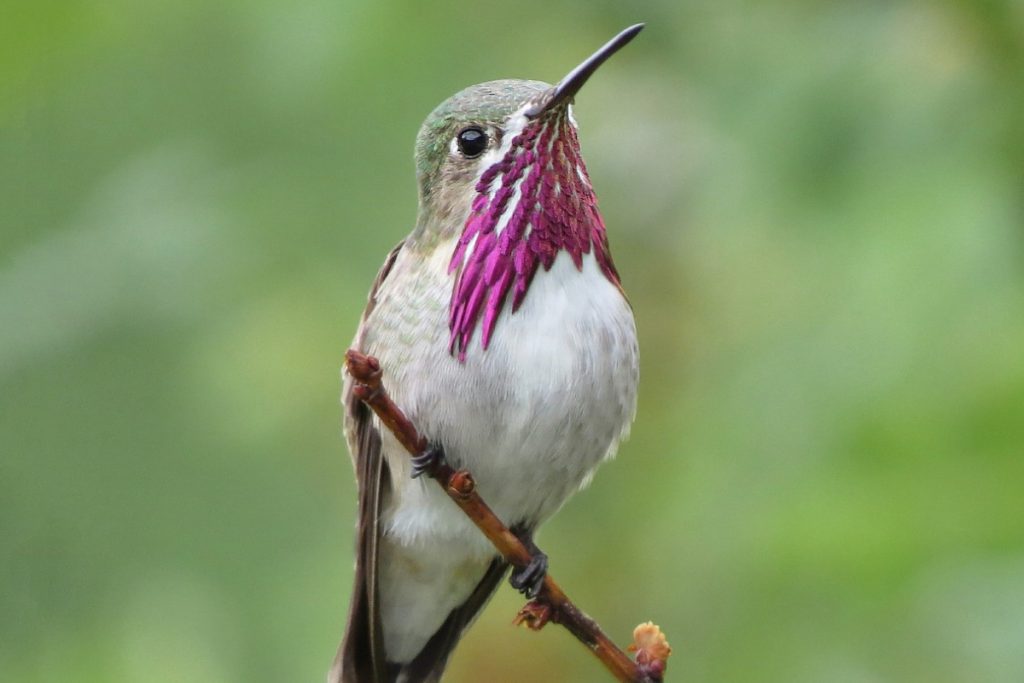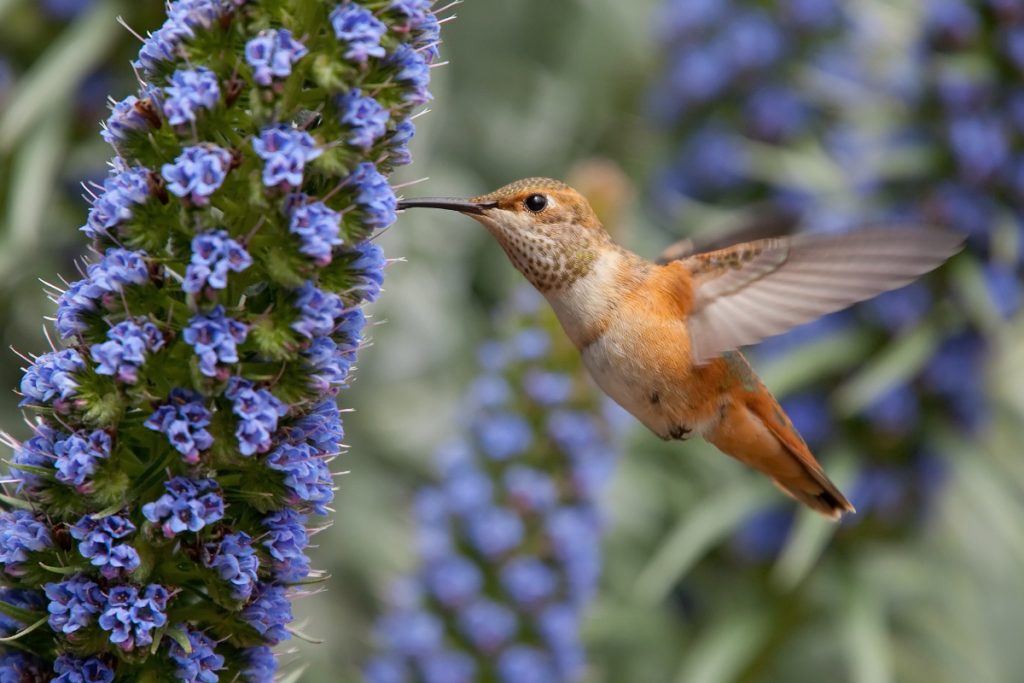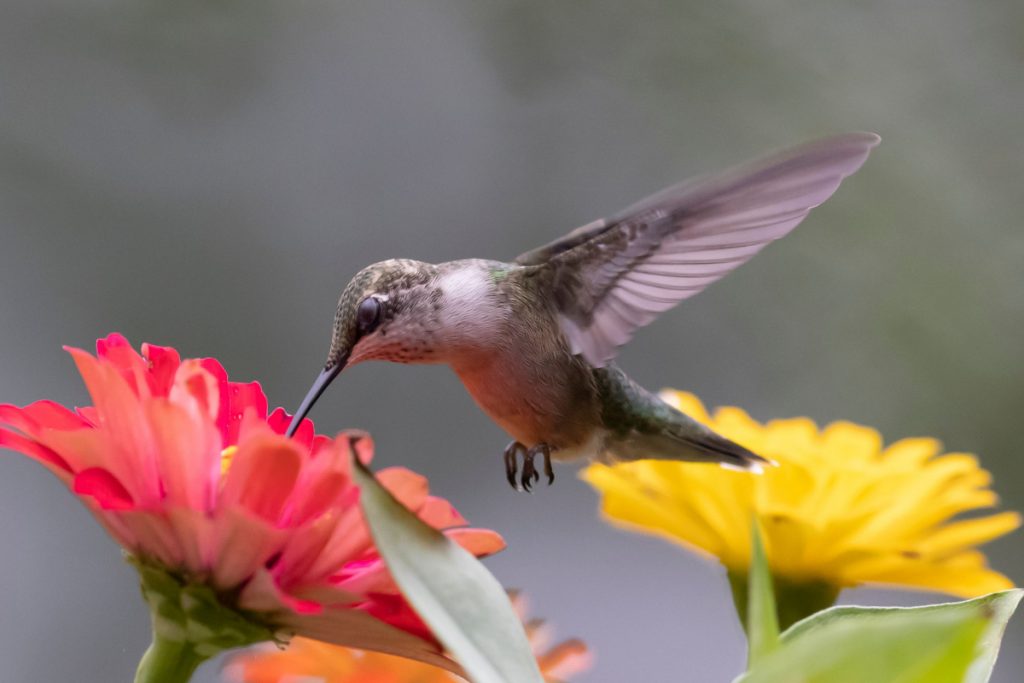Hummingbirds leave Kansas City from late July to early October. And by the end of October, the last of these migratory hummingbirds will have finally departed from the state. When they leave Kansas, they migrate south to warmer Central America and Mexico areas.
This gradual departure allows late-straggling migrants more time to refuel their bodies before embarking on their southward journey from Kansas. The timing of hummingbird migration is guided by their innate circadian (daily) and circannual (yearly) rhythms.
Male hummingbirds are often the first to leave Kansas around September, while the females follow suit in October after raising their offspring and preparing them for their own migration.
It is worth noting that even as migrating hummingbirds leave Kansas, some older or injured birds may choose to remain in the state.
Related post to read about Best Hummingbird Feeders
What Species Of Hummingbirds Can Typically Be Found In Kansas City?
Among the over 350 hummingbird species worldwide, up to 8 species migrate to Kansas, although one is more common than others.
The most frequently seen hummingbird in Kansas is the Ruby-throated, and they live up to their name because they can be identified easily by their ruby-coloured throats.
While the males have brilliant colours with a ruby throat, emerald feathers, and a white collar, the females have green streaks with white feathers.
Other migratory species that can be found in Kansas are Allen’s, Anna’s, Black-chinned, Broad-tailed, Calliope, Costas and the Rufous hummingbirds.





Where Can You Find Hummingbirds In Kansas City?
While you can entice hummingbirds to your place by planting native plants and putting up feeders, hummingbirds in Kansas are specifically abundant in some areas.
Ruby-throated hummingbirds, in particular, the most common hummingbirds in Kansas, often choose to nest in pine, hardwood, or mixed woodlands.
These woodlands are prevalent in the eastern and southeastern parts of Kansas, in the Kansas City area, extending towards Wichita, and bordering Oklahoma and Missouri.
When Do Hummingbirds Arrive In Kansas City?
Hummingbirds begin their migration to Kansas City from early to mid-April. As the weather warms up at the beginning of summer, these birds start arriving in abundance.
During this time, they have access to an abundant food supply, mainly nectar from flowers, which is their primary source of food.
One common characteristic among hummingbirds is that the male hummingbirds arrive earlier than females to establish their territories.
How Do The Migration Patterns Of Hummingbirds In Kansas City Change?
Migration patterns among Kansas City hummingbirds are subject to change due to many factors, and the primary factor that determines their migration is the weather conditions.
This is so because hummingbirds embark on these journeys in search of warmer climates, where they can find abundant supplies of their primary food sources, including nectar from flowers and insects.
Environmental factors also influence hummingbird migration patterns. The availability of insects, an essential component of their hummingbird diet, depends on the state of the environment.
Therefore, any event that disrupts this delicate ecological balance can affect their migration pattern.
What Kinds Of Plants Should Be Grown To Attract Hummingbirds In Kansas City?
To attract hummingbirds in Kansas City, it is best to grow native, pollinator-friendly plants with tabular blooms that are attractive to hummingbirds because they contain a lot of nectar.
Hummingbirds can be attracted by planting tubular-shaped flowers like hostas, hibiscus, and morning glory. They typically visit 1,000 to 2,000 flowers daily, attracted by flowers with vivid colours.
Instead of cultivating invasive plants, an excellent choice is to plant a variety of native species like impatiens, petunias, columbines, daylilies, bee balms, cleomes, and lupines.
Can You Attract Hummingbirds by Cultivating Insect-Friendly Plants?
Aside from nectar from flowers, hummingbirds feed on insects like small bugs, providing them with fats, protein and salts that nectar does not contain. Baby hummingbirds, in particular, rely on these nutrients to grow into healthy adults.
Now that you understand the importance of insects in hummingbird diets, an effective method to attract insects to your garden is by growing nectar-producing plants because these plants are insect-friendly and entice them to those flowers.
Generally, hummingbirds depend on insects for their diet, so avoiding using chemicals like pesticides, chemical fertilisers, and herbicides when growing your plants is important.
Attracting Hummingbirds With Feeders In Kansas City
While planting nectar-rich and insect-friendly plants is a sure way to attract hummingbirds, an alternate means of providing hummingbirds with food sources is through feeders. These feeders are filled with sugar water that serves as a form of supplement for these delightful birds.
So, in case you’re unable to cultivate plants, you can prepare a simple sugar-water solution, fill it up in your feeder, and hang it outside your apartment window. But, you have to change the solution often, as bacteria can grow quickly in sugary water.
As colourful birds, hummingbirds are naturally drawn to vibrant colours; therefore, it is best to choose brightly coloured feeders in shades of red or orange to attract them.
If you really want to welcome these special birds but have difficulties getting feeders, provision of water sources and potted flowers are also good options for their primary food source.

When Should You Put Up Your Hummingbird Feeders In Kansas City?
To attract the first set of migrating hummingbird species to Kansas City, it is best that you put up your feeders early in April. As always, male hummingbirds will arrive first, while the females join them soon after.
Hummingbirds found in Kansas after June are sure to stay in Kansas throughout the summer.
When Should Hummingbird Feeders Be Taken Down In Kansas City?
In Kansas, hummingbirds typically leave by late October. If you haven’t seen any hummingbirds at your feeder for about 2 weeks, it’s safe to take them down in November.
On the other hand, you can leave your feeders out to provide food for old and injured birds that can’t migrate during the winter.
Where Do Kansas City Hummingbirds Migrate To In The Winter?
When these migrant birds leave Kansas City after summer, they travel south to overwintering areas in Mexico, Guatemala, Belize, El Salvador, and Panama.
How Long Does It Take a Kansas City Hummingbird to Migrate?
The migration time of these hummingbirds will vary based on their destination and flying speed.
When flying at an average speed of 30 miles per hour, hummingbirds can fly 1400 miles—or roughly 46 hours—from Kansas to the border with Mexico. Because Panama is farther away, at a distance of about 3800 miles, these birds will need to fly even further—up to 127 hours.
Conclusion
One thing to bear in mind is that Kansas is a large state; as such, there will be variations in hummingbird arrival time since they travel from one region to the other. Meaning they will arrive in some areas of the state before others.
So, there’s no need to worry if you’re yet to see them in your area, as they’re likely on their way.
Since these delightful birds have remarkable memories, there is a high chance they’ll return to your place, especially if you create a welcoming garden environment for them to feed.
I hope you found this article helpful. If you have any questions, please feel free to leave them in the comment section below.
Thanks for reading.
Useful Links:
Related Posts to Read: Hummingbirds Migrations:
- Best Hummingbird Feeders.
- When Do Hummingbirds Leave Ohio?
- When Do Hummingbirds Leave Michigan?
- When Do Hummingbirds Leave Pennsylvania?
- When Do Hummingbirds Leave Florida?
- When Do Hummingbirds Leave Oregon?
- When Do Hummingbirds Leave New York?
References:
- About Hummingbird (Wikipedia).
- Greenewalt, C. H. (1960). Hummingbirds. New York: Doubleday. Google Scholar.
- Carey C. The impacts of climate change on the annual cycles of birds. Philos Trans R Soc Lond B Biol Sci. 2009 Nov 27; 364(1534):3321-30. doi: 10.1098/rstb.2009.0182. PMID: 19833644; PMCID: PMC2781852.
- Rico-Guevara A, Rubega MA, Hurme KJ, Dudley R. Shifting Paradigms in the Mechanics of Nectar Extraction and Hummingbird Bill Morphology. Integr Org Biol. 2019 Jan 2;1(1):oby006. doi: 10.1093/iob/oby006. PMID: 33791513; PMCID: PMC7671138.
